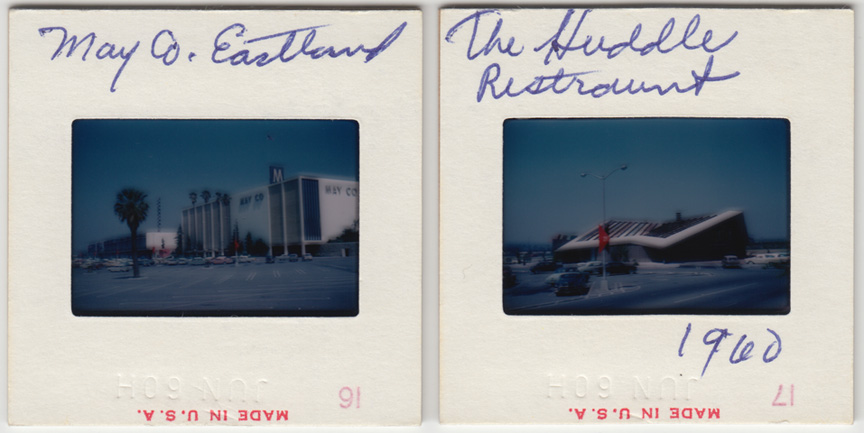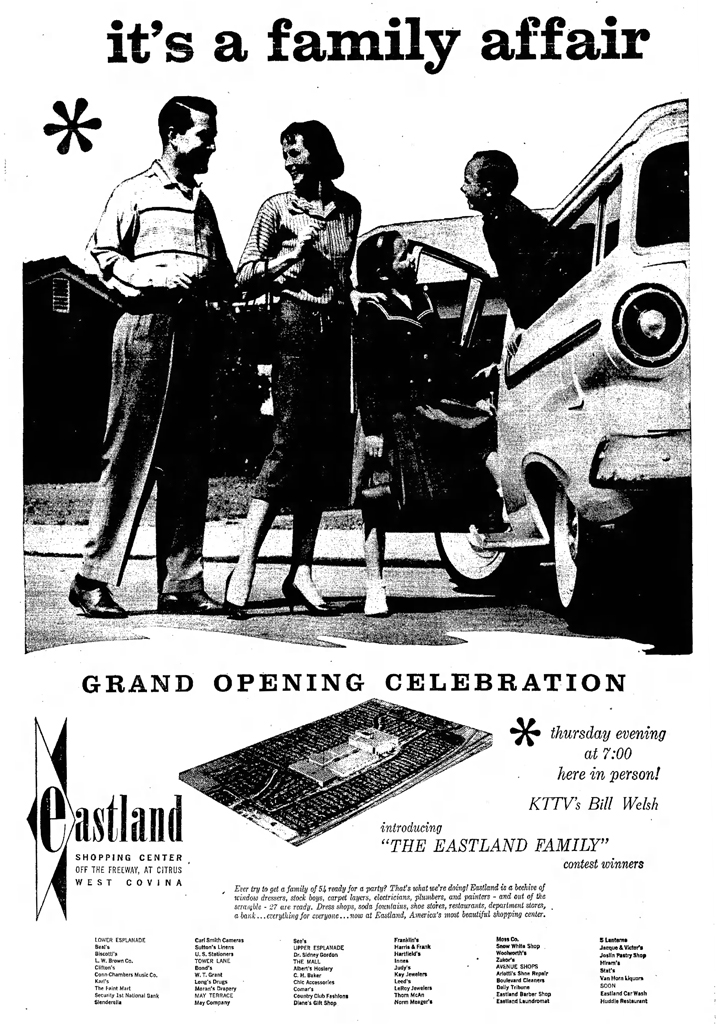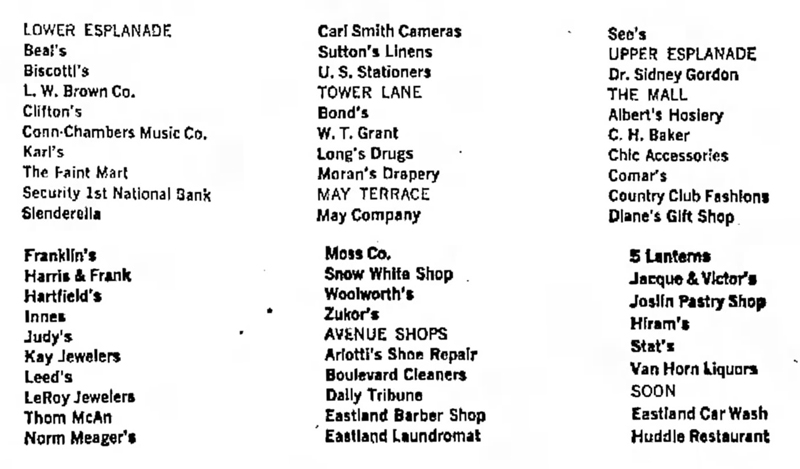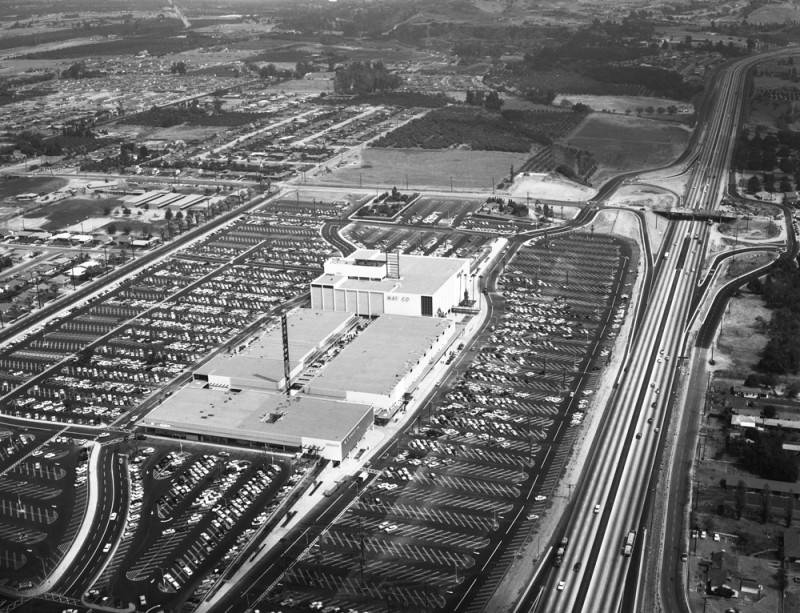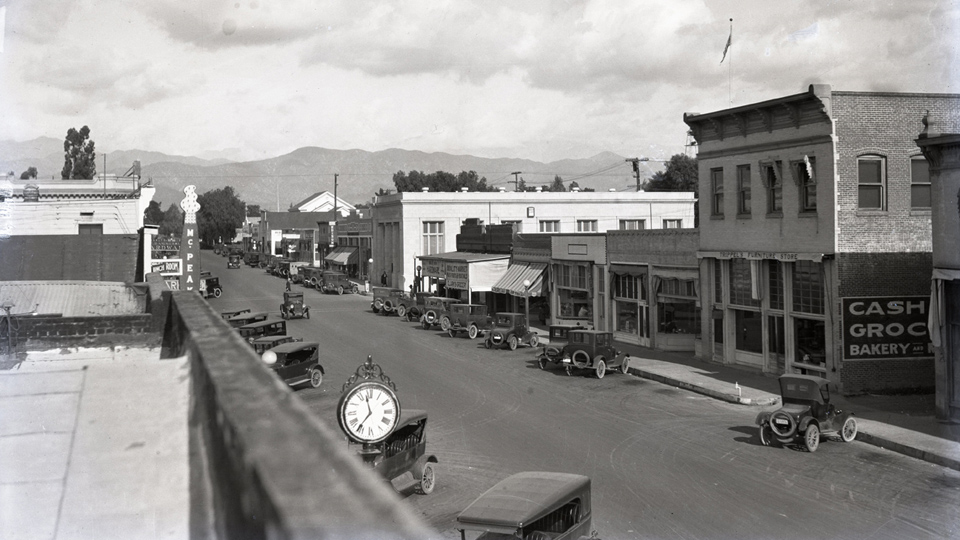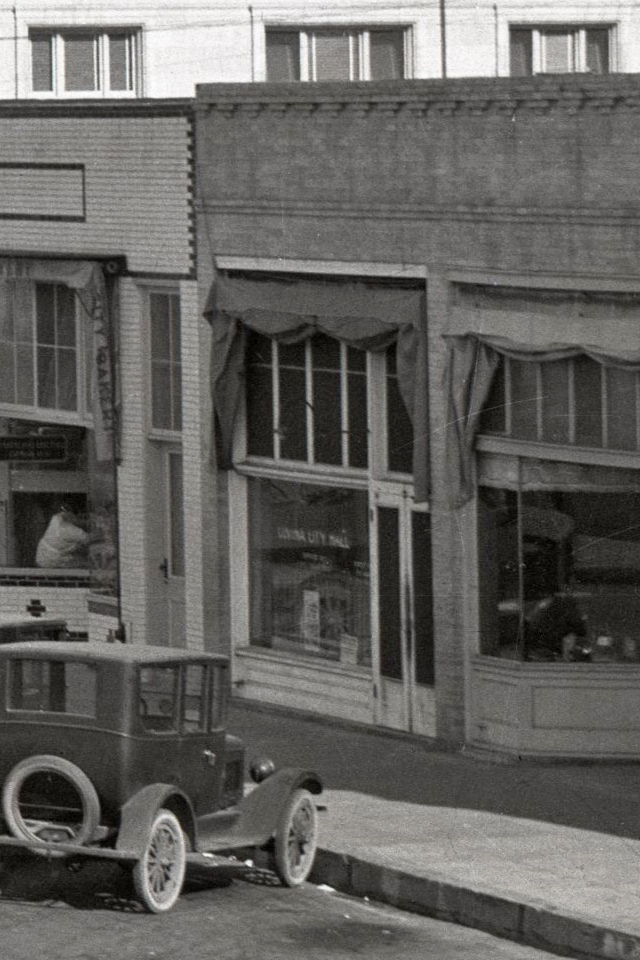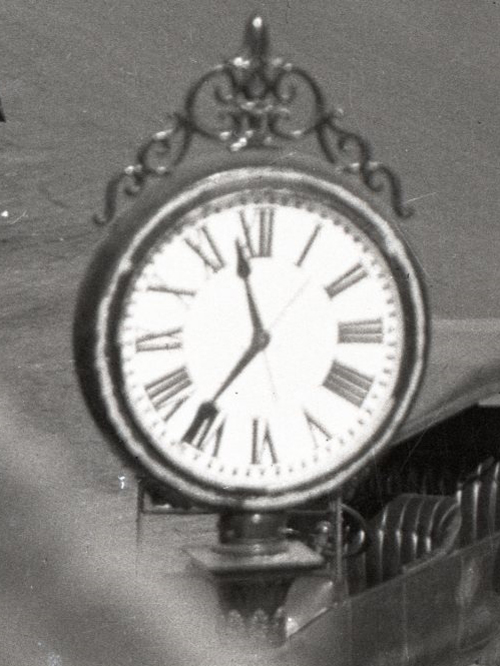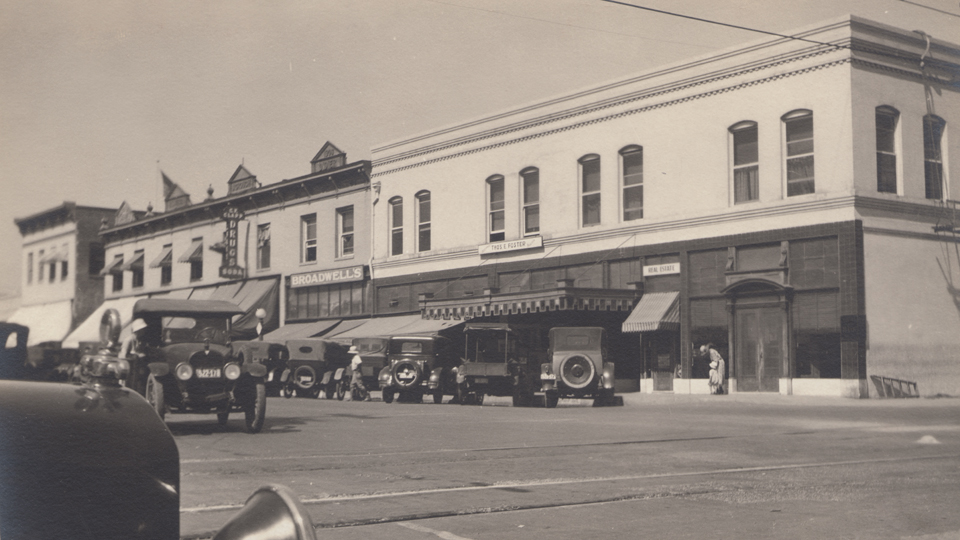To bookend Randall Smith's post on Eastland's 3-day Grand Opening (which ended 65 years ago tonight), I present this pair of previously unknown photos that I acquired just this past week.
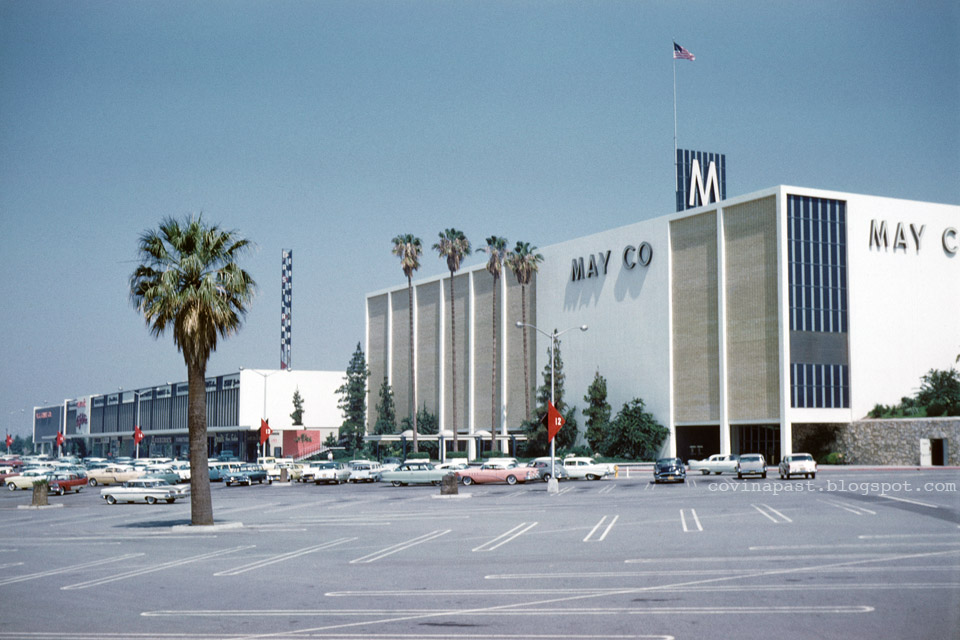
Eastland Shopping Center, West Covina, California, June, 1960. Click image to enlarge. Photo copyright © J Scott Shannon.
Eastland was once the showpiece gateway to the San Gabriel Valley, as this impressive view attests. Coming down off Kellogg Hill heading toward L.A., the flagship May Co. building in particular was a bold visual announcement to every commuter and traveler that they had arrived in a great American metropolis. By contrast, Eastland Center today is a pale postmodern shadow of its former self, notably lacking the grand scale and aesthetic appeal of its original incarnation.
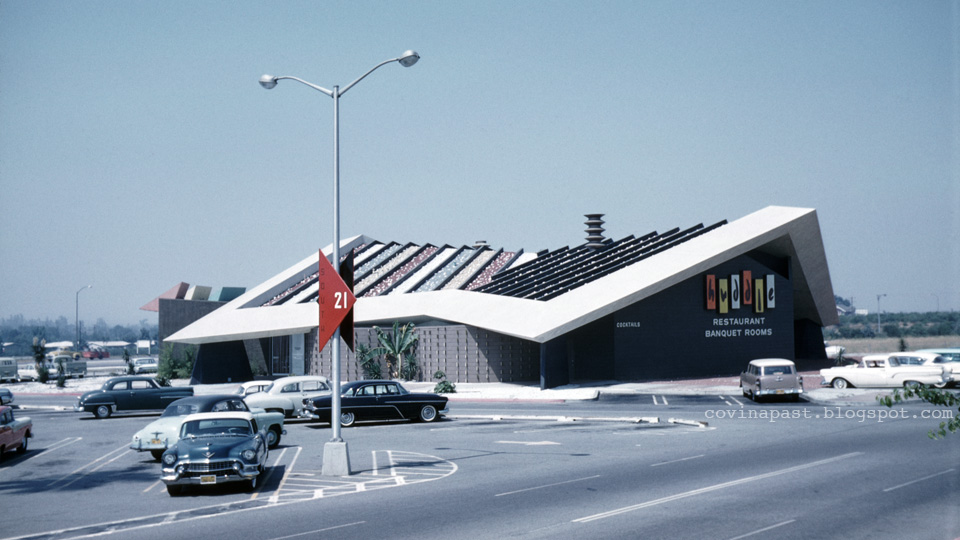
The Paul Cummins Huddle Restaurant, West Covina, California, June, 1960. Click image to enlarge. Photo copyright © J Scott Shannon.
This photo of the Huddle Restaurant is special because, to the best of my knowledge, it's the only known view of the rear of this lost Googie treasure. (The front was previously featured here.)

Sources:
